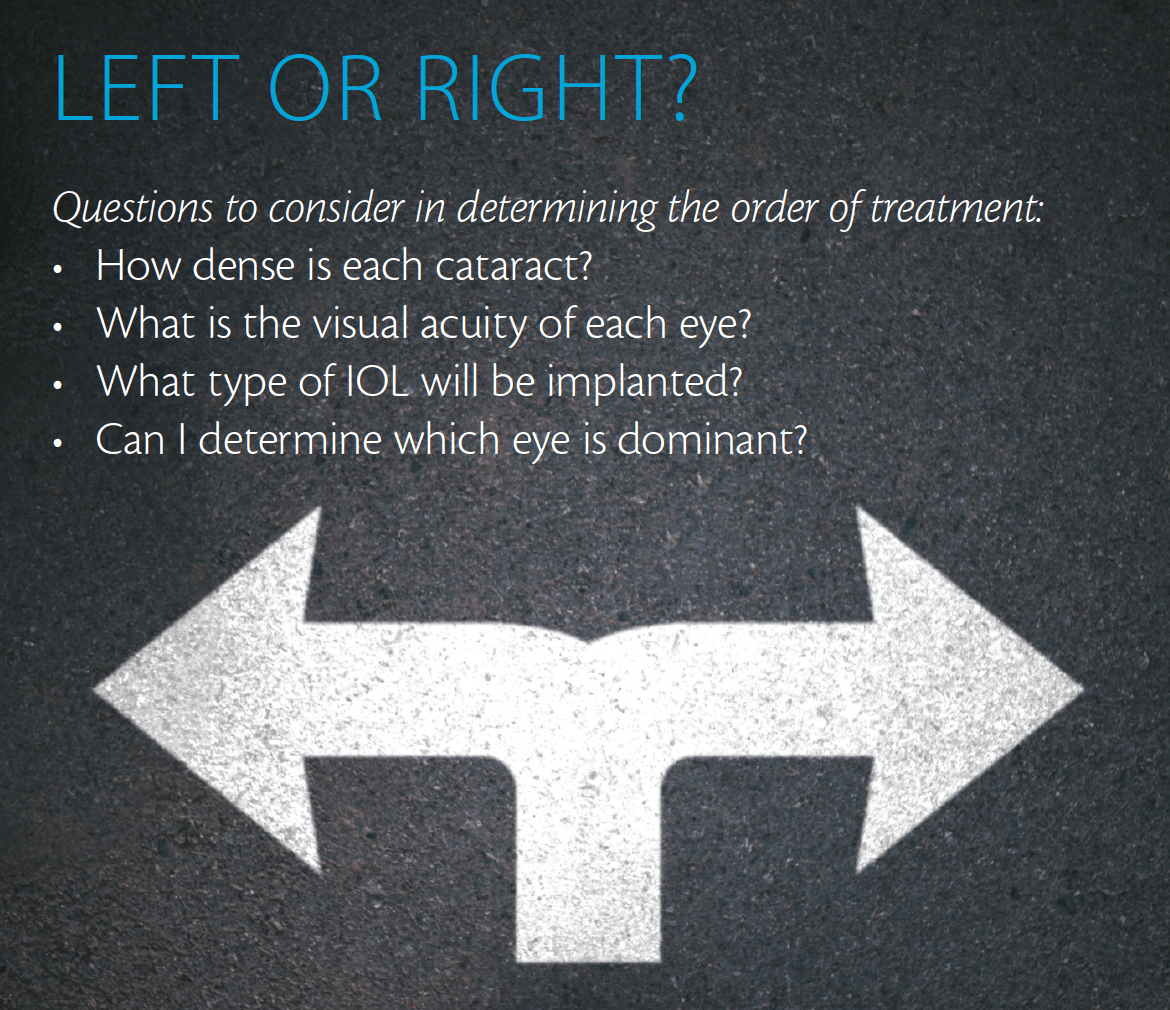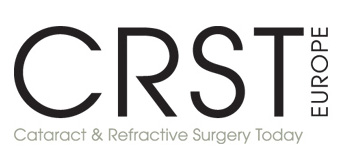Perspectives on Ocular Dominance
Insights into the order of cataract surgery with monovision and premium IOLs.
Soosan Jacob, MS, FRCS, DNB; Aloysius J. Low, MBBS, FRCS; and Bernard Chan Kwok Loong
 |
STRATEGIES FOR MONOVISIONBy Soosan Jacob, MS, FRCS, DNB |
Ocular dominance refers to the tendency to prefer visual input from one eye over the other. In cataract surgery, monovision is a commonly used strategy, preferred by many patients and doctors alike because it is not associated with the symptoms of glare, halos, and loss of contrast sensitivity that are often seen with multifocal IOLs. Monovision depends on the phenomenon of interocular blur suppression, wherein minimal blur in one eye is suppressed by the clear vision of the other eye.
With monovision, the general practice is to correct the dominant eye for distance and target the nondominant eye for between -0.75 and -1.50 D myopia, depending on the patient’s visual requirements. Although most patients prefer the dominant eye to be emmetropic for distance, some with greater demands for intermediate or near work may desire the reverse; thus, it is important to have a discussion with the patient about his or her preferences.
Alternating holding a 1.25 D sphere lens in front of each eye can help the patient clarify whether he or she prefers the dominant eye to be fixed for near or distance. (Generally, as noted, the preference is for distance.) This test should be followed by a contact lens monovision trial, during which the patient is instructed to go through his or her daily routine and perform a full range of tasks, including night driving, working on the computer, and reading. This helps educate the patient about what to expect after surgery and decreases the likelihood of postoperative dissatisfaction. The remote but possible need for enhancement in the form of corneal or even lens-based surgery should be also discussed with the patient in advance.
Targeting an emmetropic refraction in the patient’s dominant eye and -1.25 to -1.50 D in the nondominant eye will yield high-grade uncorrected intermediate and near vision, although some patients may prefer only a -0.75 D myopic difference between eyes. Some patients may need to increase their working distance for specific tasks such as reading small print or may occasionally have to wear readers.
WHICH EYE FIRST?
If one cataract is significantly denser than the other, I always operate on that eye first. If the patient has an equal grade of cataract in each eye, I generally operate on the nondominant first. When the dominant eye is being corrected for distance, it is important to conduct accurate IOL power calculations; any requirement of glasses postoperatively for distance will make the patient unhappy, whereas some error for near is generally well tolerated. Treating the nondominant eye first allows me to determine that the power calculation has been accurate. If the biometry does not match for some reason, this enables me to recheck and recalculate my measurements to ensure that the same error is not repeated for the distance correction in the dominant eye.
I also operate on the nondominant eye first in the rarer cases of patients who desire spectacle freedom predominantly for near, such as authors, goldsmiths, tailors, artists, and heavy computer users. In this scenario, the nondominant eye is operated first and targeted for emmetropic refraction. This allows a contact lens trial to be performed, once again with the targeted myopic refraction for the dominant eye, the magnitude of myopia depending on the patient’s requirement. If the patient is comfortable with the trial, I proceed with surgery. If the cataract is denser in the dominant eye, however, I treat that eye first.
 |
A PREMIUM APPROACHAloysius J. Low, MBBS, FRCS; |
In patients who need bilateral cataract surgery, the decision of which eye to treat first depends on a few variables. These factors may include the density of the cataract, the visual acuity of each eye, the type of IOLs to be implanted, and the ability to determine which eye is dominant.
At our refractive cataract center, which offers laser-assisted cataract surgery (LACS) and premium multifocal IOLs, 90% of patients have their cataract surgeries performed back to back over consecutive days. This approach is commonly preferred by our international patients and those who travel from other states to our center for surgery. It is also favored by young patients with active lifestyles. These patients all welcome the quick visual recovery, the requirement for fewer visits, the minimal downtime, and the improved adaptation compared with having the second eye treated weeks or months after the first.
Some elderly patients and those with other health issues, however, tend to be more cautious and prefer to have their second eye treated some time after the first. This is more common in our rural practice locations. In these cases, the decision of which eye to treat first ultimately rests on which eye has the significantly denser cataract or poorer vision. If the cataract density or vision impairment is similar in both eyes, and if ocular dominance can be determined, I make the decision based on the IOL choice.
WHY I BASE MY DECISION ON THE IOL
In cases in which there is no urgency or desire for surgery on consecutive days and no difference in cataract density, I choose the eye to be treated first based on the type of IOL the patient has selected. For patients opting for multifocal IOLs, I normally choose to perform surgery on the nondominant eye first. Operating on the nondominant eye first allows the patient to take advantage of the multifocality, enabling patients to read better, especially those who have been wearing reading glasses for a long time or who are hyperopic. The result is higher patient satisfaction after the first procedure.

If the patient chooses a monofocal lens, generally the dominant eye is selected to undergo surgery first. This provides the patient with good distance vision and fewer night vision disturbances, given that these patients prefer good distance vision over the ability to read without glasses.
CONCLUSION
Great strides have been made in cataract surgery technology, and our surgical techniques continue to be refined. With access to a wide variety of IOLs, with patients’ evolving lifestyles and needs, and with the increasing popularity of LACS and premium IOLs, the ability to customize treatments to the patient’s preferences and provide the vision he or she needs ultimately affects our choice of which eye to treat first.









































